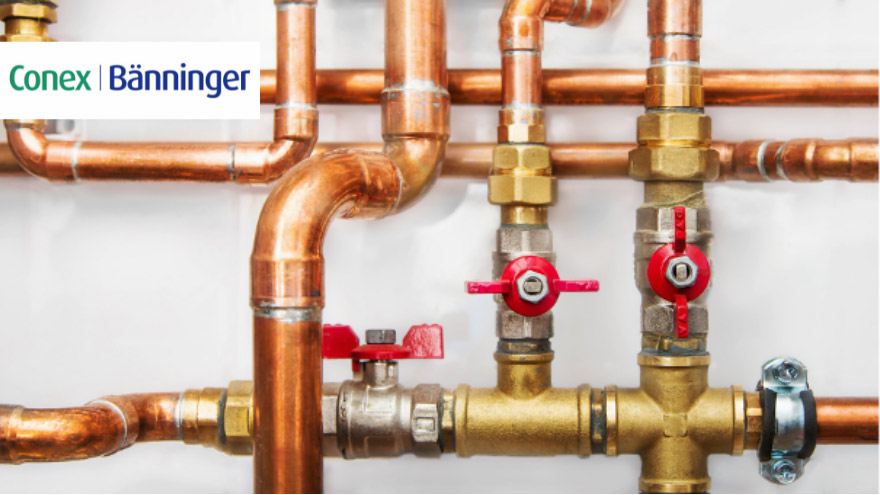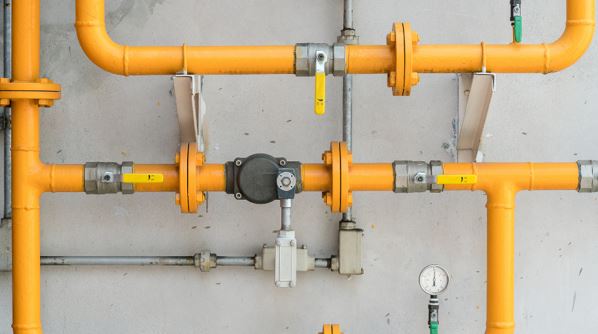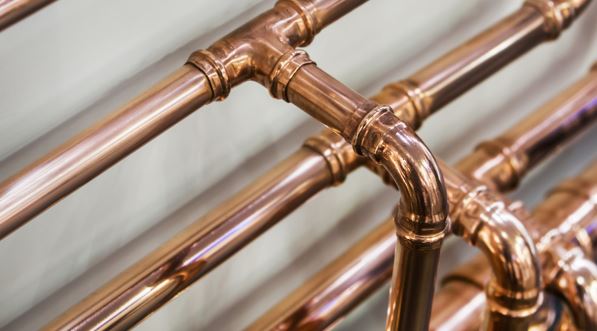Appropriate connection of gas installation pipes guarantees its tightness and, therefore, the safety of people using the facility. The methods used in this process will vary depending on many factors - primarily the materials the pipes are made of. Learn the most important rules for connecting gas pipes!

From this article you will learn:
- what do the regulations say about connecting gas pipes,
- how to connect gas pipes made of different materials,
- what products to choose for connecting gas pipes.
Connecting gas pipes – what do the regulations say about it?
The routing of gas installation cables is regulated primarily by the provisions included in the Regulation of the Minister of Infrastructure of April 12, 2002. According to the law, the arrangement of horizontal pipes in the system depends on the type of gas it is supplied with. If natural gas flows in it, they must be at least 10 cm above the electrical cables. In the case of liquefied petroleum gas, pipes are placed under electrical cables and sparking devices.
Vertical sections must be at least 60 cm away from them. They should be mounted to walls using special clamps. If gas installation pipes cross other pipes, they should be at a minimum distance of 2 cm from them. It is recommended to run gas pipes on the surface. While this is mandatory in basements and basements, on other floors cables can be placed in wall grooves, but they must not be covered with concrete.
Check Conex gas connections at the Onninen wholesaler
 The regulations regarding the routing of gas installations through specific rooms are also very important. Cables cannot run through living rooms. The main problem is threaded connections and other methods, which in theory may pose a threat to building users. Some interpretations of this rule assume that it is possible to run the gas installation through living rooms when hard copper pipes without joints and welded steel pipes are used.
The regulations regarding the routing of gas installations through specific rooms are also very important. Cables cannot run through living rooms. The main problem is threaded connections and other methods, which in theory may pose a threat to building users. Some interpretations of this rule assume that it is possible to run the gas installation through living rooms when hard copper pipes without joints and welded steel pipes are used.
Gas installations use pipes made of three different types of material:
- hard copper pipes
- steel pipes,
- polyethylene pipes.
The method of connecting gas pipes will depend on the choice of one of these materials.
Gas pipe connection systems and the materials used
Copper pipes should have walls with a minimum thickness of 1 mm (for pipes with a diameter of up to 22 mm) or 1.5 mm (for pipes with a diameter of 28 mm and above). They are connected by brazing or pressed using fittings. Steel cables are available with or without seams. They can be welded together or screwed together using threaded connectors. They are not suitable for installation in the ground, so they are often replaced with polyethylene pipes. These are used, for example, in building connections and connected to other cables using special adapters.
Steel pipe connections
 The gas installation design may assume the use of black steel pipes. Before purchasing them, it is worth checking whether they have been approved for use in Poland. Steel pipes should be welded or screwed with threaded connectors made of white cast iron. Gas installations of this type also require sealing with Teflon tape or special sealing paste. To protect the pipes against corrosion, they should also be painted with the appropriate paint.
The gas installation design may assume the use of black steel pipes. Before purchasing them, it is worth checking whether they have been approved for use in Poland. Steel pipes should be welded or screwed with threaded connectors made of white cast iron. Gas installations of this type also require sealing with Teflon tape or special sealing paste. To protect the pipes against corrosion, they should also be painted with the appropriate paint.
Copper pipe connections
In the case of a copper installation, only high-quality pipes should be used to ensure durability and reliability of the system. These types of cables cannot be used outdoors or run in closed ducts. They are connected by one of two available methods:
- using hard-soldered connectors,
- using press connectors.
It is worth paying attention primarily to the second method, because it has numerous advantages that make installation much easier. The press system significantly shortens the installation time and increases its flexibility. It is therefore a very economical solution that can be used both for hard and semi-hard copper pipes, as well as for soft copper pipes - which, however, are not used in gas installations.
To connect copper pipes in an indoor gas installation, you only need connectors of appropriate shapes and a special crimping tool. Thanks to this system, you can easily and conveniently install cables. You will avoid the need to use open flame or nitrogen, which would be required for pipes connected by brazing. Pressing also guarantees high quality and tightness of connections.
Check out Conex gas connections at the Onninen wholesaler
Plastic pipe connections
Polyethylene is a material increasingly used in gas systems - especially in the case of outdoor installations. Cables made of this material can be connected using butt welding or electrofusion. The second method ensures better tightness and strength of the connections. Electrofusion fittings are installed in or outside the trench.
An alternative solution is a butt joint system. It includes bare polyethylene pipes, fitted fittings and a special welding device. The cables are connected through butt contact of the ends welded with a welder. Connections can be made either in the excavation or outside it.
It is also worth remembering that polyethylene pipes can be connected to steel or copper installations. For this purpose, use appropriate threaded transition connectors: PE-steel or PE-copper.
Conex Banninger gas fittings
Products for connecting gas pipes in Onninen
Regardless of what cables you use when installing gas installations for your customers, in our online warehouse you will find all the products necessary for the work. In the Onninen offer, it is worth paying attention primarily to the Conex brand range. It includes a wide range of articles for connecting gas pipes. You will find both high-quality threaded connectors and fittings used in the press system.
The richness of the Conex offer makes it easy to purchase all the connectors you may need during installation works. Thanks to elements such as elbows , bends, sleeves, sleeves, plugs, nipples and tees, you can route gas lines exactly as the design assumes. The products available in our assortment are distinguished by high quality workmanship and guarantee not only easy installation, but above all, safe operation of the gas installation.
The Conex offer also includes an innovative press system that allows you to quickly and conveniently connect pipes using copper fittings. The Onninen assortment includes both the necessary connectors and matching crimping tools. Stock up on Conex products and provide your customers with an efficient and safe gas installation!
Do you have questions about the industry? Join the Świat Instalacji group!